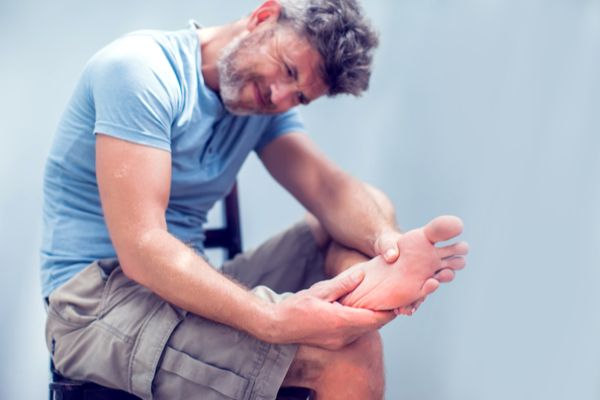3 common foot complaints

Are you ignoring pain in your feet because you keep thinking that it will subside and get better on its own? While common, foot pain is not normal. Depending on the cause of your discomfort, many foot issues can be treated effectively.
Below are three of the most common foot problems followed by some potential treatment options that may help:
1. Plantar fasciitis/heel pain
- Most common foot related complaint
Symptoms can include (but are not limited to):
- Pain at the base and medial anterior portion of the heel (right where the arch meets the heel bone)
- Pain is often worse when getting up in the morning and after periods of rest
- Pain eases after a short period of moving around but then tends to increase as the day goes on
Treatment can include (but is not limited to):
- Stretching the calf and lower limb muscles to help reduce tension on the tissue
- Physiotherapy (can include multiple modalities like exercises, massage, ultrasound, laser, etc.)
- Orthotics (custom or off the shelf) to provide adequate arch support throughout the day
2. Metatarsalgia/pain in the ball of the foot
- Characterized by pain in the forefoot area (commonly known as the ball of the foot)
Symptoms can include (but are not limited to):
- Pain in the forefoot (typically in the area at the base of the toes)
- Possible numbness and tingling in the area
- May feel like a “wadded sock” under the area often due to swelling and nerve irritation
- Pain on palpation on the heads of the metatarsals
Treatment can include (but is not limited to):
- Metatarsal pads – tear drop shaped pads placed behind the ball of the foot to support those joints and work on better weight distribution
- Proper fitting footwear – many people suffer with forefoot pain due to shoes being too narrow/too short in the toe box
- Orthotics may be used when overloading of the metatarsals is due to poor gait mechanics and foot alignment
3. Bunions (hallux valgus)
- Characterized by a lateral shift of the great toe toward the lesser toes of the foot
Symptoms include (but are not limited to):
- Pain in the great toe joint
- Reduced range of motion of the great toe
- Bony protrusion on the medial side of the great toe joint
- Potential hammering of the 2nd and 3rd toes
Treatment can include (but is not limited to):
- Surgery – most commonly done after all other options have been exhausted
- Orthotics – often overlooked as a treatment method to help prevent the progression of the lateral shift. Most feet that have bunions also have poor functional mechanics that can be improved with orthotic insoles
- Proper fitting footwear – wearing shoes that are too narrow puts too much pressure on the joint which can contribute to bunion formation
Note: none of the interventions listed (with the exception of surgery) will reverse the bunion but are intended to slow the joint shift progression.
If you find yourself struggling with any of these foot related issues, contact your local Lifemark clinic. Lifemark clinicians will work with you to develop an individualized treatment plan that will help you get back to life. Book an assessment online today.
Author Details

We can help you move and feel better.
Book an appointment today.